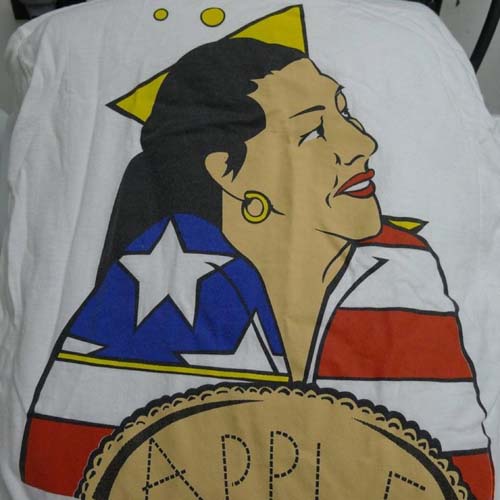From the Club Charles web site:
Esther W. Martin, longtime owner of a well-known Charles Street bar that evolved from Tenderloin to trendy, died Sunday at Johns Hopkins Bayview Medical Center of complications after surgery. She was 80.
She retired about five years ago from active management of Club Charles, which she had owned since 1951 – and operated for several early decades as the Wigwam Bar, with a sign outside depicting a teepee and offerings of “Grub and Firewater.”
She was born Esther West to Native American parents in Asher, Okla. Family members said she attended schools there before moving in the 1930s to New York City where her sister, Mary Lou West, was a Stork Club hatcheck girl. She worked at the fabled Manhattan nightspot briefly before moving to Baltimore in 1940 with the goal of studying nursing at Johns Hopkins Hospital. To support herself, she tended bar at the old Airport Grill near Harbor Field – then the city’s airfield, and now Dundalk Marine Terminal. But she soon relinquished the idea of becoming a nurse, instead holding a succession of jobs along a midtown stretch of Charles Street that was home to bars and restaurants often filled with World War II servicemen and their dates. She worked at the original Club Charles, at Charles and Preston streets, and at the nearby Band Box tavern.
In 1951 she bought her own place, a restaurant and bar called Charles Seafood, in the 1700 block of N. Charles St., which she soon renamed the Wigwam. It was, at times, a rowdy place. By the 1970s, city police reported 82 calls in an eight-month period to the Wigwam, and the city liquor board threatened to close it.
About that time, Mrs. Martin bowed to neighborhood pressure for improvement of her establishment. She brought in her children to oversee the business. They took down the Wigwam sign, renamed the spot Club Charles, brought in decorator Vince Peranio and aimed for a younger, more affluent clientele.
“What a great Baltimore character she was, a tough lady with a heart of gold,” said filmmaker John Waters, a frequent visitor before and after the change. “When she owned the Wigwam it was the scariest bar in Baltimore,” said Mr. Waters. “It was the reverse of Studio 54 – you had to be scary or you wouldn’t be let in. It was so amazing how the scariest bar became the coolest bar. It’s been the anchor for the creative community in Baltimore. I loved talking to her. … She had one of the wildest, foulest mouths. She was the kind of Baltimore character that is getting rarer and rarer. She was an inspiration to me.”
“She was part Native American and was very proud of her heritage. She had a beautiful collection of Native American artwork,” said Patrick Kahoe, a former business partner. “She was like a profane Gertrude Stein. She said curse words in unusual combinations and in repetitive patterns that no one else could come up with. She was good-natured about it and would then cackle and laugh afterward.”
“She had that Baltimore personality that involves no pretense,” said film casting agent Pat Moran. “She was a good old soul and was kind to people – but she didn’t suffer fools.”
Family members said she always believed in the neighborhood and purchased adjoining real estate. Over the years, she acquired seven properties near Pennsylvania Station .
“She was very excited to see Charles Street come back,” said a daughter, Joy Martin, with whom she had lived in Roland Park in recent years after moving from her longtime Charles Village home.
Services are private.
In addition to her daughter, Mrs. Martin is survived by two sons, Kent Battle Martin of Little Rock, Ark., and Dick S. Martin of Westminster; another daughter, Kim Martin of Stoneleigh; and two grandchildren. Her 21-year marriage to Kent Martin ended in divorce.
Copyright © 2003, The Baltimore Sun, January 22, 2003

